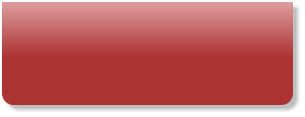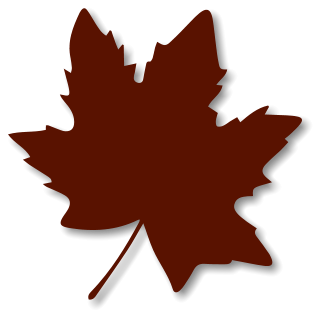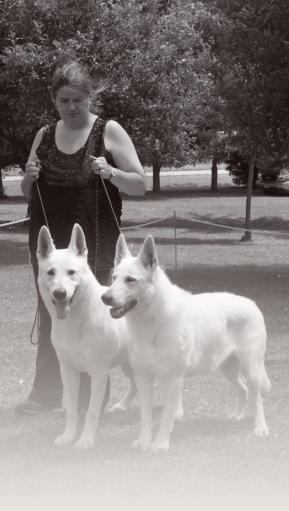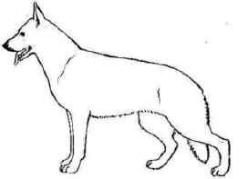



White Shepherd Club of Canada Breed Standard
GENERAL APPEARANCE
The
White
Shepherd
is
a
well
developed
and
balanced
animal
with
pronounced
energy
and
purpose
In
life,
it
should
have
a
regal
appearance
with
a
definite
look
of
intelligence,-
the
over
riding
trait
being
his
devotion
to
his
master.
Secondary
sex
characteristics
should
be
well
defined.
The
White
Shepherd
appears
to
be
somewhat
longer
than
tall,
with
smooth
curves
rather
than
hard
angles.
The
White
Shepherd
has
slightly
sloping
withers,
strong
back
and
well-bent
hocks
indicating
speed
and
grace,
while
his
face
displays
high
intelligence,
at
all
times
avoiding
extremes.
This
is
a
herding
dog,
and
as
such
must
have
the
agility,
freedom
of
movement
and
endurance
to
do
the
work
required
of
it.
The
White
Shepherd
should
present
an
image
generally
conforming
to
this
diagram
and
as
described
in
the
text.
The
desired
TYPE
is
so
important.
Breed
TYPE
should
be
the
model
and
goal
of
breeders
and
judges.
Although
the
genetic
roots
are
from
the
German
Shepherd
family,
the
White
Shepherd
evolved
from
a
continuous
selection
for
a
companion
dog
with
that
exclusive
colour,
beauty
and
elegance
as
seen
both
standing
and
in motion. These are the factors that make up the White Shepherd TYPE.
TEMPERAMENT
The White Shepherd has distinct personality marked by a direct fearless, but not hostile expression of self confidence. It should be poised, when the occasion demands, eager and alert.
To his inherent aptitude as a guardian of flocks should be added protectiveness of the person and property of his master. In his relationship with humans, he should be observant and
vigilant with strangers but not apprehensive. He should be fit and willing to serve in any capacity such as a companion, herding dog, watch dog or service dog.
Faults: of temperament are serious, timidity, shrinking behind handler, lack of confidence or any other display of poor character. Unprovoked aggression.
SIZE and WEIGHT
Ideal
height
(at
shoulder)
is
64
cm
(25
Inches)
for
males
and
58
cm
(23
Inches)
for
females,
variations
of
3
cm
(I
inch
above
or
below
being
acceptable.
The
ideal
weight
being
34-39
kg
(75-85 lbs) for males and 27-32 kg (60-70 lbs) for females, keeping in mind the ideal balanced animal.
Faults: Any animal that is so over or under height as to be outside the acceptable range is highly objectionable and considered a fault.
COAT
The White Shepherd has a double coat. The outer coat is medium length, dense, straight, harsh. and close lying. The undercoat should be fine and dense. The head and ears are
covered with a smooth, somewhat softer hair, while the hair coverinq the legs and paws is more harsh. At the neck, the coat is slightly longer and heavier. A male may carry a thicker
ruff then a female, but In all cases the body coat should never be longer than 7 cm (2.5 Inches). The back of the legs have a slightly longer covering of hair and there is considerably
more hair on the breeches and underside of the tail.
Faults: An open coat with no undercoat or a body coat that is longer then 7 cm (2.5 inches).
COLOUR
The White Shepherd's coat colour is white as defined by the breed's name. The ideal is pure white, other coat markings that are of cream or biscuit are acceptable but not preferred.
The skin is pink to grey with grey being preferred. The nose, lips, eye rims, and pads should be black, Snow noses are acceptable but not preferred. It must be remembered when
judging a dog, temperament, soundness and movement are more important than coat colour alone.
Faults: The deficiency of pigment is to be considered a serious fault, ie: dogs faded in all the following area: noses, eye rims, lips, pads.
Disqualification: Total lack of pigment. (albino)
HEAD
The White Shepherd's head should be proportionate in size to the body. Males should show masculinity without coarseness. Bitches should show femininity without being over refined.
Both sexes should exhibit a look of intelligence and nobility.
Skull: Viewed from the top Is wedge shaped and strong. When viewed from the side the top line of the skull should parallel that of the muzzle and there should be a moderate stop.
Muzzle: Strong with lips fitting tightly over a well developed jaw, viewed from above the muzzle appears wider at the stop than at the top, without cheekiness.
Eyes: Medium size, almond shape, set a little obliquely, not protruding. Preferably dark, expression keen, intelligent and composed.
Ears: Moderately pointed, open to the front, erect at attention. Ideal carriage; center lines (as seen from the front) parallel and perpendicular, Ears should be proportionate to head and
body.
Faults: There should be no tendency towards overly long, narrow or a collie like head. Insufficient stop, round or donkey skull, snipey muzzle or a receding jaw. Soft or hanging ears.
Disqualification: Cropped or hanging ears.
TEETH
Scissors bite, 20 upper and 22 lower (full mouth is preferred). Broken teeth are not considered a fault. Over one missing premolar is a fault.
Faults: A level bite is faulty, an overshot bite is a severe fault, an undershot bite is a disqualification.
NECK
Strong and muscular, clean cut without loose folds of skin, proportionate to size of head. Except when at attention or excited, the typical carriage of head is forward rather than up,
particularly in motion.
Faults: A long, short, ewe or throaty neck.
TOPLINE
Withers: Should be higher than and slightly sloping into the back.
Back: The back should be straight and very strongly developed, without sag or roach, from the shoulder to croup. The back is relatively short, the length is not derived from a long back.
When standing natural the back should be virtually level.
Loin: Viewed from the top is broad and strong. From the side the loin blends smoothly into the back without undue length between the last rib and thigh.
Croup: Should be long and gradually sloping, flowing smoothly into a low set tail.
Faults: A roached or sagged back. A near level croup. A dog whose hips are higher than the shoulder when standing or moving.
FOREQUARTER
Shoulder: The shoulder blade (scapula), should be long, and well laid back, flat against the body, with its rounded upper end, at the ridge in a vertical line above the elbow. The blades
come close together at the top of the withers then slope well forward to the joint of the shoulder and upper arm (point of shoulder). If you draw an imaginary line from the withers or
top of shoulder blades to the prosternum tip, then to the tip of the elbow it would be of equal lengths and form at almost a right angle. This angulation permits the proper forward
extension of the foreleg, which should meet the ground as it is fully extended forward.
Forelegs: Straight, oval rather than round or flat.
Proportionate to size of dog, which contributes to impression of substance without grossness. Front legs viewed from front should be straight. Elbows are well held in with no tendency
to turn in or out. The point of the elbow lies roughly in a vertical line under point of withers.
Pasterns: Medium length, strong and springy, ideal angulation is 25 degrees from the straight of the leg.
Faults: Loose or loaded shoulders (bulging muscle pads) as seen from the front or pushed forward shoulder assembly. Elbows thrown out, shoulders too short, or straight. Bent legs,
out of line bones, too down on pasterns.
BODY
Solid without bulkiness
Chest: Forechest well filled, Prosternum should show in front of the point of the shoulder. Chest depth is approximately 48 to 50% total height of the dog.
Ribs: Well sprung, long, neither barrel shaped nor flat (so as not to interfere with the action of the elbows and the forelegs) carried down to the breast bone reaching to elbow.
Body Proportion: Somewhat longer than tall, ideal proportions are 8.8 high to 10 long ie. 64 cm high [25 inches] to 74 cm [29 inches] long. Length is measured from the prosternum to
the point of the buttocks.
Faults: A bottom line tucked up in the flank, like that of Greyhound. A dog that is visibly out of proportion.
HINDQUARTER
In length and angulation, the scapula and the pelvis roughly equal each other, and the slant of the lower thigh bones roughly approximate that of the pelvis and of the humerus.
Pelvis: The pelvis lies tilted backward at an approximate angle of 35 degrees from the horizontal. Whether standing four square or firmly and naturally with one ear leg extended
behind the pelvis the femur drops almost vertically from the hip socket, forming an approximate 125 degrees angle with the Pelvis. The upper and lower thigh bones are roughly the
same length.
Thighs: Both upper and lower thigh bones are broad and heavily muscled. The stifle is well bent, its angulation must never be so steep that the dog's hocks lie directly under any part of
the croup or pelvis. Extra length of either the upper or lower thigh can distort this angle to the extent that rear drive and follow through are impossible. Legs are parallel to each other
(as viewed from the rear).
Croup: Long and gradually sloping, flowing smoothly into the tail. Ideally the tail should be carried at or below the natural extension of the topline. It is permissible to carry the tail
higher, but not desirable, as long as the tail is not carried any higher than right angles to the back line. Too level or flat a croup prevents the proper functioning of the hind quarters,
that must be able to reach far under the body. A steep croup will limit rear extension of the hind quarter, interfering with the follow through.
Hock: The hock joints are strong, clean, short, and perpendicular to the ground. Whether in motion or at rest there is no tendency to tun in or out. The angle at the hock is also
relatively sharp. From the rear the hind legs drop straight and parallel to each other and the feet point straight ahead.
Dew claws, if any, should be removed.
Tail: Is bushy with the last vertebrae extending at least to the hock joint and usually below. At rest it hangs straight down or at a slight curve. Even in excitement the dogs should never
lift the tail higher than right angles to the backline.
Faults: Too long a stifle. A sickle hock. Whether in motion or in rest, there is no tendency for the hocks to turn in or out (cow or bow hocks). A tail carried higher than a right angle to its
back, a curled around tail or a tail that hooks on the end.
FEET: Short, compact with tops well arched. Pads thick and tough affording the dog protection over rough terrain. Nails short and strong.
Faults: Terrier foot, hare foot, thin pads or a spread foot.
MOVEMENT
Soundness is of paramount importance. The action is single track, free, supple and tireless, the movement of the shoulders and forelegs with the powerful thrust of the hindquarters, in
unison. The feet travel close to the ground, and neither fore nor hind feet should lift high on either forward reach or backward push. At full trot, the back must retain firm and level.
From the front, the legs move inward toward a center line under the body in a straight column of support from the point of shoulder to the pad. From the rear, the legs track inward
toward a center line in a straight column of support from the hip to the pad. With the exception being at an extended trot where the over reaching hind foot will pass the diagonal front
foot, this is not considered faultv unless it causes the animal to move in a crabbing fashion. Capability of quick and sudden movement is essential. Clean side gait, and coming and
going are equally important.
Faults: An animal with clumsy or inelegant gait or whose back is at any angle from horizontal during movement is considered faulty. Stiltness, loaded or slack shoulders. straight
shoulder placement, weakness at elbows, pasterns, or feet, (ie: running or standing on hocks or pasterns) straight stifles, cow or bow hocks or flipping the feet must be regarded as
serious faults.
FAULTS
Any deviation from the listed specifications is a fault, many of which are listed in the text. In determining whether a fault is minor, serious or major, these two factors should be used as
a guide:
1. The extent to which it deviates from the type
2. The extent to which such deviation would actually affect the health or working ability of the dog.
DISQUALIFICATIONS
* Cropped or hanging ears
* Docked tails
* Monochids or cryptorchids (male dog--one or two undescended testicles)
* Surgically altered for cosmetic reasons, i.e. tails that have been operated on for high carriage or curling.
* Any dog that attempts to bite the judge.
* Undershot bite.
* Total lack of pigment (Albino).
SUMMARY
The White Shepherd ancestors were bred to be herding dogs, but his high degree of intelligence and striking beauty, coupled with his sense of loyalty have allowed the White Shepherd
to survive as a most versatile working dog serving humankind. In spite of efforts to deny their existence. Bred true to TYPE they will stay true to TYPE.


WSCC.Canada
White Shepherd Club of Canada
Pride Webdesign
© WSCC 1972 - 2016
all rights reserved.





NOTE:
The following text and diagram are the property of the White Shepherd Club of
Canada, and may not be copied or reproduced without written permission.
© ALL RIGHTS RESERVED














